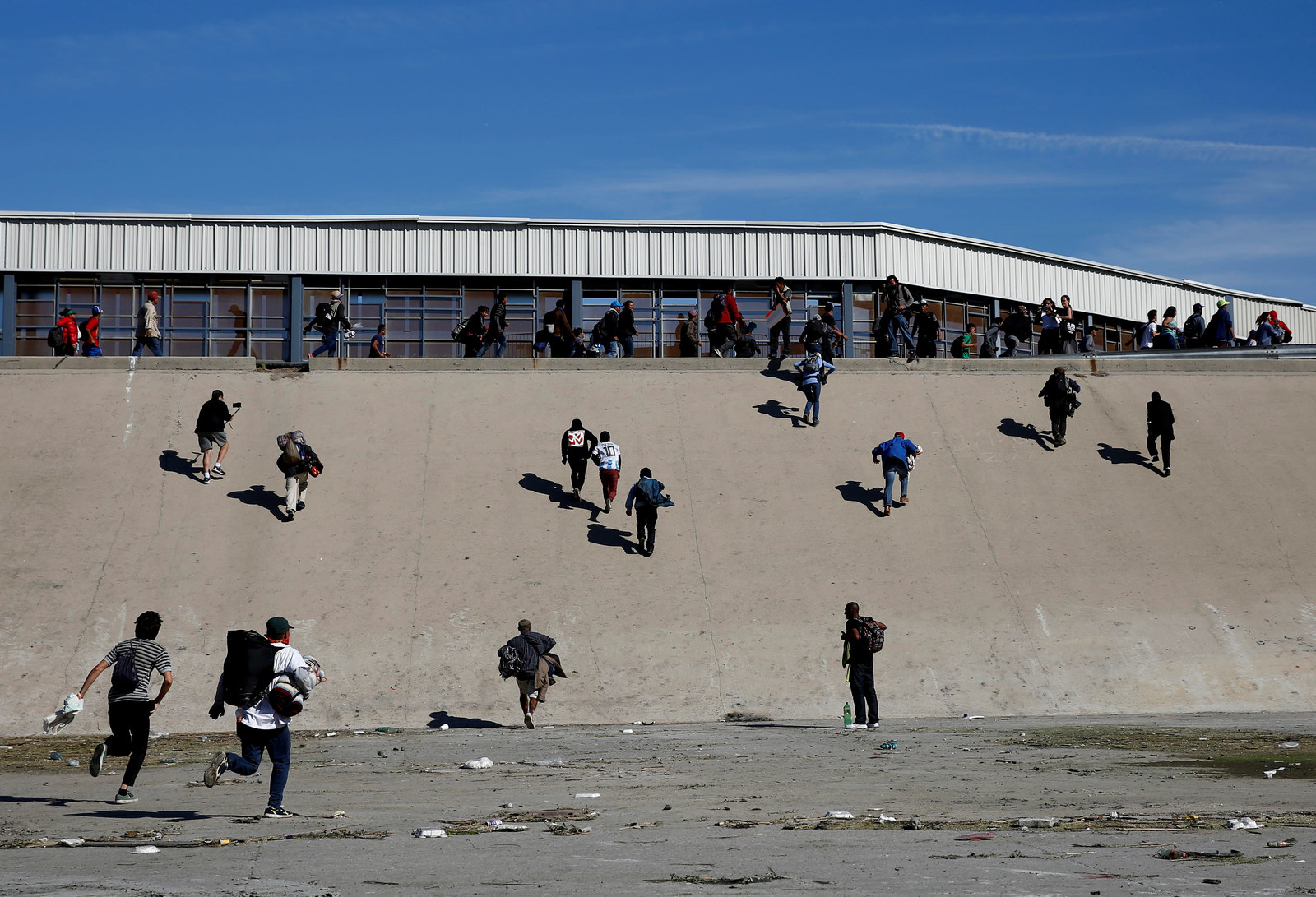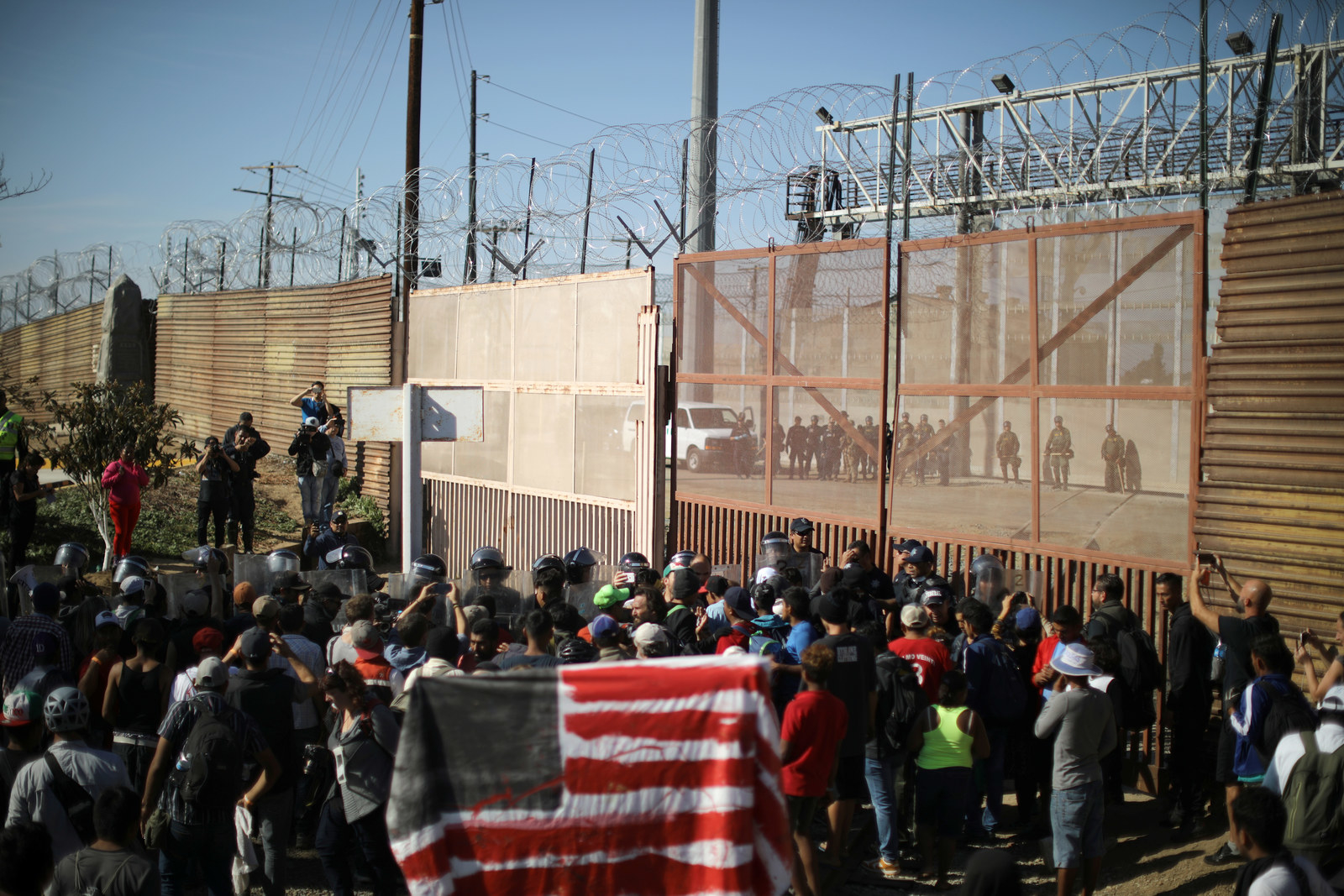https://apple.news/A8VLzlyN7QImERHmUEChNnA

Scott Bixby reports for The Daily Beast:
President Donald Trump’s record-long shutdown may be over, (for now), but immigration judges and attorneys worry that its disastrous effects on the immigration court system will last for years.
The 35-day government shutdown, ignited over Trump’s demands for congressional funding of his long-promised border wall, exacerbated the very immigration crisis the president claims the barrier would solve, halting nearly all immigration court cases and putting three in four immigration judges on furlough. Hearings on asylum cases, deportation, and appeals against orders of removal were delayed indefinitely, pending a “reset” upon the government’s re-opening that shuffled tens of thousands of cases to the back of the line.
The only way to solve the pileup, one prominent immigration judge told The Daily Beast, is a trade: Dump Trump’s demand for a 2,000-mile wall, and instead double the number of immigration judges to deal with cases.
“If we’ve got a million cases backlogged, we need a thousand judges,” said Judge Dana Leigh Marks, an immigration judge in San Francisco and president emeritus of the National Association of Immigration Judges. The current roster of roughly 400 judges, she said, “is less than half of what we need.”
“We’re having a tsunami of retirements because working conditions have become so unbearable,” said Marks. “It is incredibly stressful, because we know that the consequences of our cases are literally life and death.”
The Department of Justice, which oversees the immigration court system, already had a crisis on its hands before the shutdown, Marks said, with a backlog of at least 800,000 cases in a system with too few judges and too little funding.
The swell of asylum seekers from El Salvador, Guatemala, and Honduras, combined with the Trump administration’s crackdown on undocumented immigrants in the United States, had created a years-long backlog of pending immigration court cases. The number of pending immigration court cases grew by 84 percent since the end of 2013, according to the Department of Justice’s Executive Office for Immigration Review, and jumped by 26 percent just since the end of 2016.
“They allowed the courts to get to the anemic state that we were in prior to the shutdown,” said Marks, who has served as an immigration judge for 33 years. With the cancellation of tens of thousands of immigration cases that will now be shuffled to the back of a years-long line, “the shutdown’s effects will last for years.”
That backlog—which doesn’t even include an estimated 300,000 closed “low-priority” cases that the Justice Department ordered reopened in May—is currently being pushed through a mere 60 immigration courts across the United States. The roughly 400 immigration judges who keep that system moving have been given the Sisyphean task of clearing their dockets, a mission that even the most industrious judges think may be unfeasible.
“Most of us are extremely pessimistic about the current state of our dockets,” said Marks, noting that immigration judges are optimally supposed to go through four three-hour hearings per day. “They’re booked in an unrealistically heavy-packed manner that will not mean that we can finish all of the cases that are set on a given day.”
In a bid to speed through the backlog, the Department of Justice announced in April that it would impose quotas on judges, requiring the completion of 700 immigration cases per year to earn a “satisfactory performance” rating, as well as less than 15 percent of their cases remanded to a higher court—meaning that judges have to both increase the speed of their proceedings while decreasing errors that could lead to an appeal.
“The purpose of implementing these metrics is to encourage efficient and effective case management while preserving immigration judge discretion and due process,” wrote then-Attorney General Jeff Sessions when the policy was announced.
That new policy, Marks said, would only increase the pressure on the judge to serve two competing masters: the Department of Justice quotas and due process.
“The quintessential skill of a judge is knowing how to schedule your dockets, and yet we’re being told for political reasons, for the optics, how to do so,” said Marks, who warned that forcing judges to speed along complex proceedings encourages future appeals based on questions of judicial motivation.
“These are not simple and straightforward” cases, said Marks, who once famously likened deportation proceedings to “doing death penalty cases in a traffic court setting.”
“An immigration judge is shifting through four or five different times that the story has been told to see whether it’s consistent or inconsistent… Political optics is at tension, if not in conflict, with a judge’s role to ensure that each case in front of us provides the individual with due process.”
Add in a shutdown, immigration attorneys told The Daily Beast, and an overburdened system risks collapsing into chaos.
“Each day that there’s a government shutdown, you’re setting yourself up to add months” before a hearing, said Michael Wildes, an immigration attorney who represented Melania Trump and her parents in their immigration proceedings. “There will be enormous delays. For undetained individuals with court dates… they will back up even more egregiously than they have.”
Unclogging the dockets may be impossible, said Jason Dzubow, a Washington D.C.-based immigration attorney specializing in asylum law, leaving clients with good cases waiting for years to have their day in court.
“It’s just gonna be way too complicated to give people any kind of priority—which then, of course, causes a huge chain reaction, because it’s already a big mess,” Dzubow said. “What are they going to tell their families?”
Fixing the backlog without sacrificing undocumented immigrants’ right to due process—a prospect with which Trump has already publicly flirted—could require a wholesale reconfiguration of the immigration court system, Marks said, starting with removing it from the purview of the Department of Justice.
“People feel like there’s a thumb on the scales… because of the historically close relationship between the prosecutors‚ the Department of Homeland Security and the judges,” said Marks. “Judges have become, in a way, the sacrificial lamb in this process, because so much pressure has been applied to us. If we don’t follow, it renders us subject to personal discipline or training for evaluations that we are performing poorly, which can affect our very ability to retain our jobs.”
Such a dynamic, Marks said, has “a tremendous chilling effect.”
“A political branch is not the proper administrator for a neutral legal system.”
But in the meantime, both judges and attorneys working in the clotted immigration system feel that the $5.7 billion Trump has demanded for his border wall would be put to better use in hiring more immigration judges.
“There is an enormous divide between the amount of traffic and judges,” said Wildes. “In many ways, immigration has been looked upon as a stepchild in our legal system, where people recognize that it’s only a civil matter rather than a criminal matter. It actually has greater import—particularly when someone is facing banishment from the country.”
*******************************************
Yup! Should be no surprise to readers of “Courtside.” In my experience, EOIR never really recovered from the mindless 2013 shutdown. Anybody with any real knowledge or who cared about our Government, our Constitution, and real immigration enforcement could have seen this coming “from a million miles away.” But, we’re saddled with a Kakistocracy — a “Clown Administration” if you will. 🤡
PWS
01-30-19

























